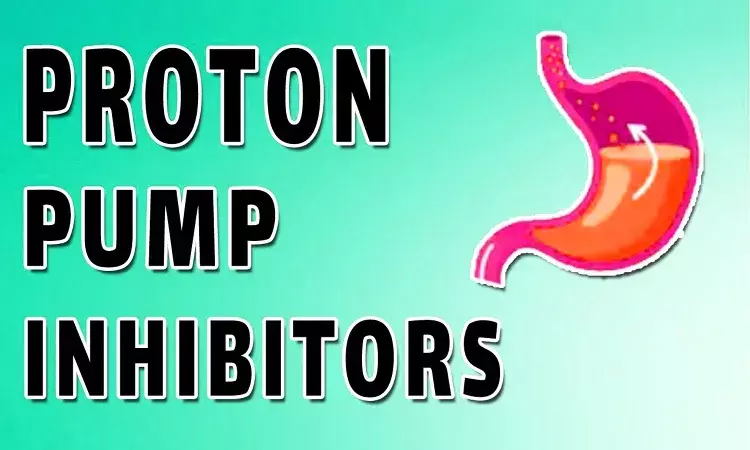- Home
- Medical news & Guidelines
- Anesthesiology
- Cardiology and CTVS
- Critical Care
- Dentistry
- Dermatology
- Diabetes and Endocrinology
- ENT
- Gastroenterology
- Medicine
- Nephrology
- Neurology
- Obstretics-Gynaecology
- Oncology
- Ophthalmology
- Orthopaedics
- Pediatrics-Neonatology
- Psychiatry
- Pulmonology
- Radiology
- Surgery
- Urology
- Laboratory Medicine
- Diet
- Nursing
- Paramedical
- Physiotherapy
- Health news
- Fact Check
- Bone Health Fact Check
- Brain Health Fact Check
- Cancer Related Fact Check
- Child Care Fact Check
- Dental and oral health fact check
- Diabetes and metabolic health fact check
- Diet and Nutrition Fact Check
- Eye and ENT Care Fact Check
- Fitness fact check
- Gut health fact check
- Heart health fact check
- Kidney health fact check
- Medical education fact check
- Men's health fact check
- Respiratory fact check
- Skin and hair care fact check
- Vaccine and Immunization fact check
- Women's health fact check
- AYUSH
- State News
- Andaman and Nicobar Islands
- Andhra Pradesh
- Arunachal Pradesh
- Assam
- Bihar
- Chandigarh
- Chattisgarh
- Dadra and Nagar Haveli
- Daman and Diu
- Delhi
- Goa
- Gujarat
- Haryana
- Himachal Pradesh
- Jammu & Kashmir
- Jharkhand
- Karnataka
- Kerala
- Ladakh
- Lakshadweep
- Madhya Pradesh
- Maharashtra
- Manipur
- Meghalaya
- Mizoram
- Nagaland
- Odisha
- Puducherry
- Punjab
- Rajasthan
- Sikkim
- Tamil Nadu
- Telangana
- Tripura
- Uttar Pradesh
- Uttrakhand
- West Bengal
- Medical Education
- Industry
JAMA study reports drug-induced lupus erythematosus in users of proton pump inhibitors

France: In case of suspected cases of drug-induced lupus erythematosus (DILE), proton pump inhibitors (PPIs) should be considered as a potential etiology, researchers suggest in a study published as a research letter in the journal JAMA Dermatology.
Proton pump inhibitors (PPIs) are medications that exhibit their action by reducing the amount of stomach acid made by glands present in the linings of the stomach. PPIs role has been suggested in the occurrence of drug-induced lupus erythematosus for both drug-induced cutaneous lupus erythematosus (DI-CLE) and drug-induced systemic lupus erythematosus (DI-SLE) but remains poorly characterized.
Considering the above, Pauline Bataille, Hôpital Tenon, Paris, France, and colleagues aimed to examine the pharmacovigilance signal of PPI-associated DILE using different indicator tools for disproportionate reporting. They also strived to better characterize the spectrum of PPI-associated DILE by focusing on the DILE type as well as therapeutic management.
To achieve their objectives, the researchers performed a disproportionality study. They used data from VigiBase, the global pharmacovigilance database of WHO. Case-non-case studies was conducted for all PPIs and each molecule to test potential pharmacovigilance signals in reporting odds rations (RORs) and computing the information. For cases published after r January 1, 2002 sensitivity analyses was performed. The researchers took into account immunological, clinical, and therapeutic management of potential PPI-associated DILE from the French pharmacovigilance database. By using both the DILE types and therapeutic management, the authors aimed to better characterize the spectrum of PPI-associated DILE.
Based on the study, the authors reported the following:
· 559 cases were reported in the VigiBase between January 1985 and December 2019, 21,104, 625 of which were DILE associated with a PPI. The median age at DILE onset was 59 years and 78.2% were female patients.
· In about half of these cases (49.1%, n = 307), a PPI was the only suspected drug, with omeprazole shown as the most frequent PPI (30.4%, n = 190).
· Pharmacovigilance signals were noted for lansoprazole (IC 0.72; ROR, 1.97), esomeprazole (IC 0.67; ROR, 1.84), and omeprazole (IC 0.70; ROR, 1.87).
·791,922 cases were reported in the French pharmacovigilance database, of which 60 were DILE associated with a PPI and 49 were included. 65.3% were female patients.
· In the database, esomeprazole was the most frequently involved PPI (46.9%, n = 23).
· An isolated DI-CLE was seen in 79.6% patients, including discoid DI-CLE (5.1%, n = 2), subacute DI-CLE (48.7%, n = 19), unspecified DI-CLE (43.6%, n = 17), and tumidus DI-CLE (2.6%, n = 1).
· Additionally, 7 patients (14.3%) reported DI-SLE with cutaneous involvement, with most specified cases being of the subacute type (42.9%, n = 3).
· PPI was stopped in 71.5% of patients (n = 35/41) and remission occurred in 51.4% (n = 18/35) without specific treatment.
The authors concluded, ""This descriptive case series highlights that PPIs may be associated with not only isolated DI-CLE, but also DI-SLE with or without cutaneous involvement."
Reference:
Bataille P, Lebrun-Vignes B, Tubach F, et al. Proton Pump Inhibitors Associated With Drug-Induced Lupus Erythematosus. JAMA Dermatol. Published online August 17, 2022. doi:10.1001/jamadermatol.2022.2421
Dr Kamal Kant Kohli-MBBS, DTCD- a chest specialist with more than 30 years of practice and a flair for writing clinical articles, Dr Kamal Kant Kohli joined Medical Dialogues as a Chief Editor of Medical News. Besides writing articles, as an editor, he proofreads and verifies all the medical content published on Medical Dialogues including those coming from journals, studies,medical conferences,guidelines etc. Email: drkohli@medicaldialogues.in. Contact no. 011-43720751


